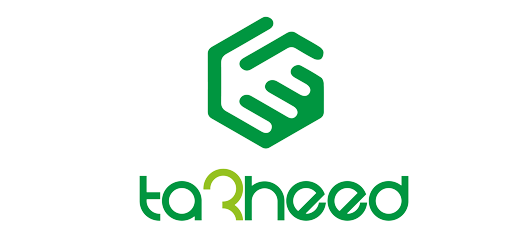
Average handle time is a mission-critical metric that contact center managers and agents alike obsess over. It’s key to measuring costs, performance and areas of operations that require improvement. It has a direct impact on staffing levels, training, coaching and, ultimately, customer satisfaction.
However, it’s also a metric that creates conflict. It’s an area of operations that can be costly to improve and could mean reducing spending on other aspects of customer experience (CX) delivery. However, diluting CX levels can prove even more costly in the medium-to-long term. Consumers have ever-increasing expectations of brands and are prepared to switch from one organization to another simply because of CX, whether the product or service is technically superior to that of a competitor.
So how can organizations improve AHT without breaking the bank?
What is average handle time in a contact center?
Contact center AHT is a metric for monitoring and understanding the average amount of time an agent requires to conduct a conversation with a customer within a live channel. As well as measuring agent productivity, contact center AHT can be segmented by contact type to identify if certain issues are harder — and therefore take more time — to resolve and require further training.
Average handle time is calculated by adding together the total talk time, total time customers are on hold and total time agents were unavailable due to after-call work and dividing that sum by the total number of calls received.
And when AHT is considered too high and is reflected negatively in other metrics such as customer satisfaction (CSAT) or customer effort scores (CES), the first course of action is to look at agent performance and potential shortcomings. However, it’s usually external factors that have the greatest impact — positive or negative — on an agent’s ability to do their job.
This is why the best way to understand all the factors that could be damaging average handle time in a contact center is to take an outside-in approach. This means starting by looking beyond the walls of the center and examining current contact volumes.
1. Deflect contacts
The fewer contacts flowing into a contact center, the more time agents have to resolve issues. By reducing the number of calls or chats an agent must handle during a shift, the pressure to lower average handle time decreases.
Therefore, identify the most common contact drivers to see if these issues can be resolved through FAQs or self-service content on a website, or by steering customers to an asynchronous channel such as email, social media or messaging.
No customer wants to have to make a call to resolve an issue. So, contact center managers need to presume that in most cases, any customer in a queue has already made some attempt to resolve their own issue. Customers want and appreciate self-service — don’t disappoint them.
2. Look upstream
No matter how many updates are made to self-service, if a product or service has a persistent issue or some defect, or if marketing communication or other external materials relating to a product are incorrect, contact volumes will continue to rise, as will average handle time.
As such, the only way to resolve these issues is to look upstream, have open lines of communication with the wider organization and develop standard processes for addressing such problems.
3. Make more of IVR
A contact center’s IVR system should reduce pressure on agents and shorten customer wait times. However, it should also offer the possibility for customers to resolve their issue before joining a queue and capture any relevant information that, if the customer needs to speak to a live agent, will accelerate the speed to resolution.
This includes authentication and validation, two crucial yet time-consuming aspects of delivering the right CX while simultaneously protecting an organization from bad actors and attempted fraud.
AHT can be further reduced by using the IVR to prompt customers and inform them of all the information they’ll need before the call starts, such as reference codes, order numbers, etc.
4. Route calls to the right agent
If the IVR is successfully categorizing and pre-qualifying customers, it’s easy to optimize call routing. This ensures that the customer is connected with the agent best qualified to resolve the issue and therefore deliver on an expectation in line with average handle time targets.
Call routing is effective during peak times and seasonal changes, and it’s also possible to create agent pools focused on handling individual issues and using intelligent routing to steer customers in the right direction.
Outside of seasonal spikes and peak hours, call routing can also ensure that the workload is balanced so each agent isn’t overwhelmed and gets a mix of issues to resolve throughout a shift.
Once routing has been optimized, it’s time to focus on what happens inside the contact center, paying particular attention to the technologies agents and managers need to use to meet KPIs.
5. Give agents a single customer view
It’s impossible for agents to see the bigger picture or devote all their attention to the conversation taking place if all information and channels aren’t presented together. When an agent doesn’t have access to a complete customer history, or if they must endlessly toggle between different application windows and systems, average handle time increases, while the ability to resolve an issue or identify and seize opportunities to upsell or cross-sell diminishes.
All these issues can be solved with a unified agent desktop that pulls all pertinent information and systems together on the screen. As well as improving AHT, adopting a unified agent desktop reduces agent frustration and improves their ability to focus.
6. Automate repetitive tasks
Repetitive tasks can include updating files, inputting information during and following each conversation and manually searching through the knowledge base. Even with a unified desktop, there will be times during a conversation when the agent needs to put a customer on hold or needs more time to arrive at a resolution. Likewise, after each call, there are processes to complete which means the agent is unavailable to speak to the next customer even if the current conversation has ended.
Speech and text analytics can capture and understand every word spoken in every interaction in real time. This, in turn, means that it’s possible to automatically generate and input post-call summaries, reducing the time an agent needs to spend between calls updating customer histories.
The same technology can also accelerate the time to resolution as this ability to understand conversation means forms and fields can be populated automatically and relevant information sourced without the agent needing to perform a manual search.
7. Automate agent assistance
As an organization’s use of speech and text analytics matures, as datasets and insights grow, the technology can take automation to another level. With automatic agent assistance, agents can receive on-screen prompts and alerts regarding the next-best action, or whether an interaction offers the chance to upsell or cross-sell. It can also help to identify if — through tone of voice, choice of vocabulary or the number of words spoken per minute — the customer is demonstrating signs they’re considering cutting ties with the organization.
Average handle time is a key metric and one on which performance will be scrutinized both inside and outside the contact center. But it’s also a benchmark that needs to be considered in context. If a contact center is well managed and if all internal and external factors relating to efficiency and improvement have been addressed, AHT could still be high, at least at first glance. Yet if all common contact drivers have been properly deflected, and if technology is being correctly deployed, the customers who still need to connect with a live agent are likely doing so because they have a complex and time-consuming issue to resolve.
Ready to learn more and elevate your contact center’s performance? Explore our ebook for operations leaders and empower your team to excel — “Measure & manage contact center performance.”







